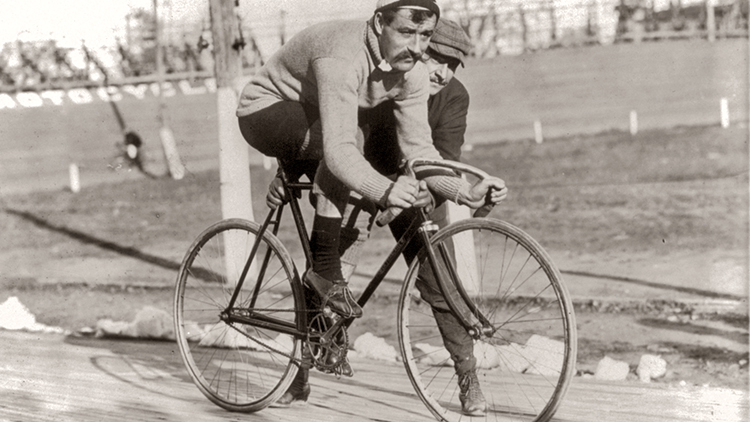
The photograph shows Leon Georget, a cyclist who won many races in the early 1900s. His bike doesn’t look too different from bicycles today. But Georget is missing an important piece of safety equipment—a helmet!
May is Bicycle Safety Month, so it’s a great time to learn about the history of bicycle helmets. In the late 1800s, bicycle racers wanted to protect their heads. They made helmets out of plant materials. The helmets would break up on impact, but they were probably the best people could do at the time. In the early 1900s, bike racing was more popular—and more people were getting head injuries from falls. Racers began to use helmets made of rings of leather. They offered a little more protection than plants, but cyclists wanted their heads to be safer.
In the coming years, people developed more helmets, but the helmets were often heavy. They didn’t protect people’s heads well enough. In the 1970s, an auto parts company made the first helmet that looks more like helmets today. It had a hard plastic shell on the outside and foam-like material on the inside. In 1984, standards were created for helmets. These helped people choose the right helmets and took dangerous ones off of store shelves. Helmets have become even more streamlined and comfortable today.
Why are helmets so important? They reduce the chance of head injuries during falls. It’s still important to follow all the rules of the road and be careful on bicycles, though.
What Do You Think? What made the bicycle helmet change throughout history? How can a bicycle helmet protect you?
Photo Credit: Library of Congress, Prints & Photographs Division, [LC-USZ62-60663]



